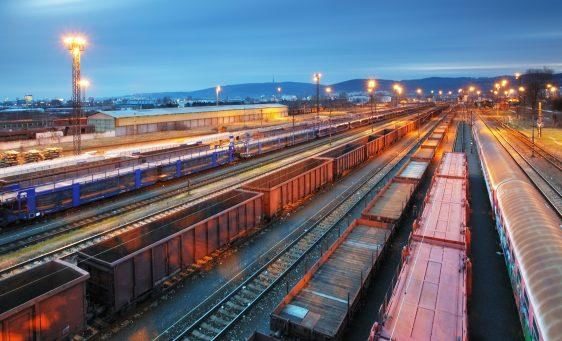
New tool offers transport sector support in setting science-based carbon targets
May 30th 2018
Passenger and freight transportation is currently responsible for nearly one-quarter of all energy-related carbon emissions. And, while electric vehicles, transport demand management and other technological innovation offer great promise for decarbonizing the sector, it remains one of the fastest growing sources of carbon emissions.
In today’s era of global supply chains and expectations of next-day delivery, climate commitments from the transport sector are not on track to keep global warming below 2°C by the end of the century.
We need to bring every means to encourage the sector to raise its ambition regarding cutting its emissions. To that end, WWF has developed a sectoral decarbonization tool for transportation with the support of technical partners (transport NGOs), and collected feedback from industry and non-industry.
The new tool aims to assist transport companies, companies with logistics emissions in their value chains and road vehicle manufacturers to set emissions targets in line with the reductions needed to meet the goals of the Paris climate agreement.
The Science Based Targets initiative encourages and supports companies in setting emission reduction targets that are in line with what climate scientists say are needed to hold warming below 2°C.
The new transport tool uses the Sectoral Decarbonization Approach, which divides the global carbon budget – the total volume of greenhouse gas emissions that can be released while staying within the 2°C ceiling – among sectors, and then among emitting companies within the sector, taking into account decarbonization options and likely growth.
The new tool uses underlying data based from the Mobility Model (MoMo) developed by the International Energy Agency (IEA).
By using MoMo data, decarbonization pathways for different transport modes are derived, allowing companies to compare their emission reduction plans with IEA’s main emissions reduction scenarios, the 2°C scenario (2DS) and the Beyond 2°C scenario (B2DS).
The guidance that accompanies the tool will help companies decide which transport-related emissions they should include in their science-based target, which boundaries they should set, and which timeframes they should use.
This guidance is based on greenhouse has (GHG) accounting standards and science-based target setting best practices. It also includes a step-by-step description of how to use the tool and how to interpret its results. The guidance helps companies formulate robust and transparent science-based targets for transport operations.
As of April, more than 100 global corporations have set science-based targets, while another 270 have made a formal public commitment to do so. We hope this new tool and guidance facilitates more commitments and more approved targets.
Our technical partners and some of our project supporters shared highlights and comments with us.
“This project incorporates international best practices for science-based targets, GHG accounting methods, and transportation emission inventory models, and thus provides solid guidance for companies aiming to set specific GHG emission reduction targets”, says Cristiano Façanha, Program and Regional Lead at The International Council on Clean Transportation. “It also complements the work of other global initiatives, such as the Global Green Freight Action Plan, which bridges the gap between government policies and industry initiatives”.
Alan Lewis, Global Logistics Emissions Council (GLEC) Director at Smart Freight Centre, indicates: “The development of the transport guidance and tool to supplement the existing SBTi methods portfolio is an exciting and important step. By aligning with the GLEC Framework for Logistics Emission Methodologies it ensures businesses can consistently calculate and report emissions to set and track progress towards their emissions reduction targets.”
Holger Dalkmann, Interim Secretary General at Partnership on Sustainable Low Carbon Transport (SLoCaT), notes: “Meeting Paris Agreement targets will require bold, rapid and tangible action by countries, cities and companies to limit transport emissions. WWF’s tool and guidance can help front-runner companies raise ambition for a “fast track” pathway to transform their transport activities, demonstrating that transport decarbonisation is technically feasible, economically attractive, and brings broad social and environmental benefits.”
Yann Briand, Transport Policy Researcher at the Institute for Sustainable Development and International Relations (IDDRI) highlights: “Ambitious transport decarbonization compatible with the Paris goal requires an alignment of anticipations by all actors, countries, cities and companies. An extensive engagement of the private sector by setting emission reduction targets and defining appropriate decarbonization strategies with the new transport tool is a key component to reach this alignment”.
Jean-Dominque Senard, President of Michelin, which has supported the project, added: “Michelin has been committed for many years to significantly reducing its carbon footprint. The Science Based Targets initiative is a natural step to take to ensure our commitment is followed over the long term. The support from WWF will not only help Michelin but other actors across the transport sector.”
Jean-Philippe Hermine VP strategic environmental planning Groupe Renault, indicated: “Groupe Renault committed in 2017 to reduce the carbon footprint of vehicles sold worldwide by an average of 25% between 2010 and 2022, in line with the +2°C scenario (2DS) for light duty vehicles published by the International Energy Agency. In addition and consistently, Groupe Renault has provided input for the new SBT Transport tool which offers the opportunity to extend and compare CO2 reduction trajectories up to 2050, with COP21 targets and with our pairs of the automotive sector. This is a valuable new tool for us that will help us to submit our plan for validation by the SBT initiative.”
WWF completed this work on behalf of the Science Based Targets of which it is a founding member. The other partners are CDP, WRI and the UN Global Compact.
The transport tool and guidance can be found: https://sciencebasedtargets.org/transport-2/



